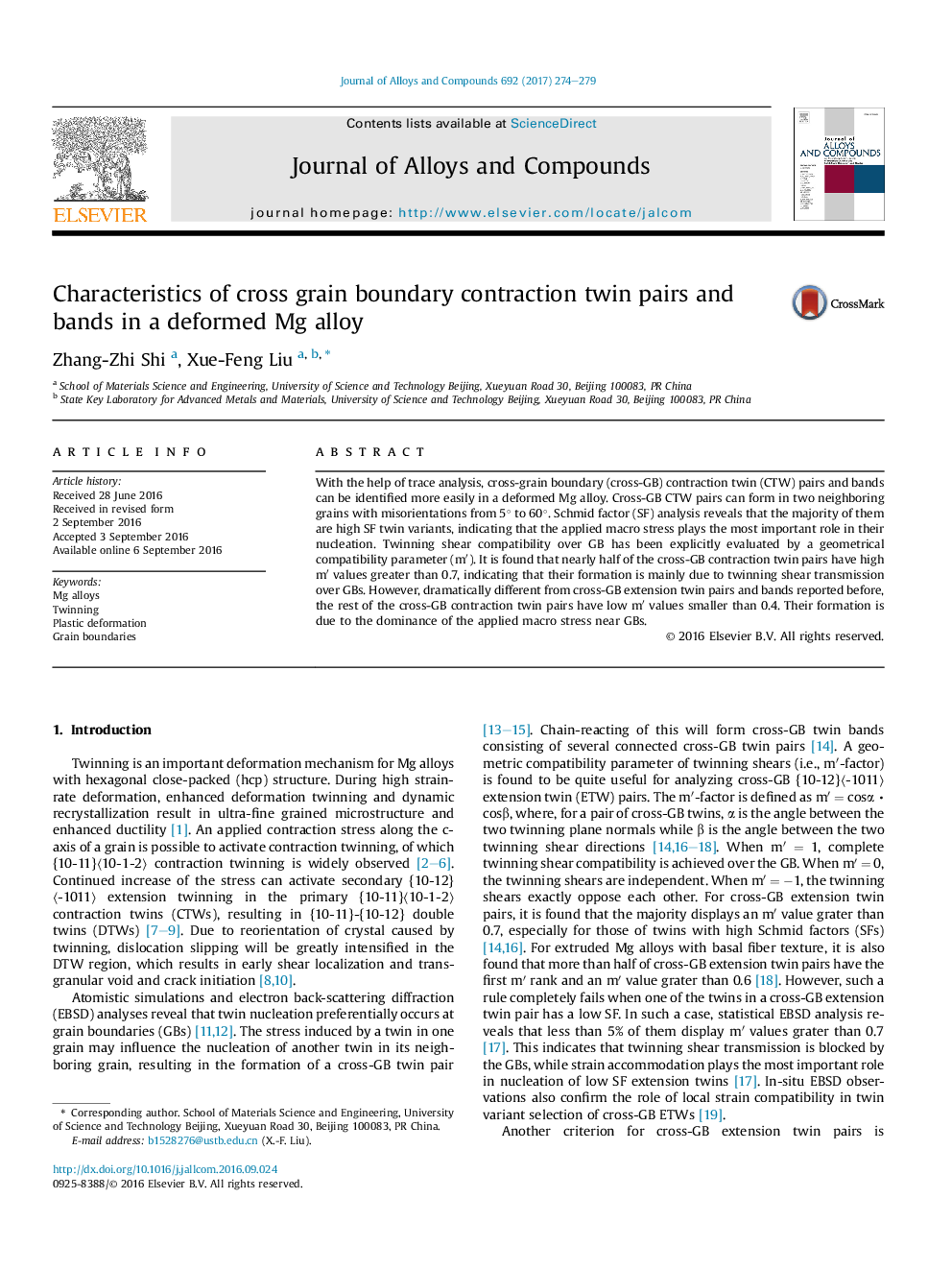| Article ID | Journal | Published Year | Pages | File Type |
|---|---|---|---|---|
| 5461502 | Journal of Alloys and Compounds | 2017 | 6 Pages |
Abstract
With the help of trace analysis, cross-grain boundary (cross-GB) contraction twin (CTW) pairs and bands can be identified more easily in a deformed Mg alloy. Cross-GB CTW pairs can form in two neighboring grains with misorientations from 5° to 60°. Schmid factor (SF) analysis reveals that the majority of them are high SF twin variants, indicating that the applied macro stress plays the most important role in their nucleation. Twinning shear compatibility over GB has been explicitly evaluated by a geometrical compatibility parameter (mâ²). It is found that nearly half of the cross-GB contraction twin pairs have high mâ² values greater than 0.7, indicating that their formation is mainly due to twinning shear transmission over GBs. However, dramatically different from cross-GB extension twin pairs and bands reported before, the rest of the cross-GB contraction twin pairs have low mâ² values smaller than 0.4. Their formation is due to the dominance of the applied macro stress near GBs.
Related Topics
Physical Sciences and Engineering
Materials Science
Metals and Alloys
Authors
Zhang-Zhi Shi, Xue-Feng Liu,
